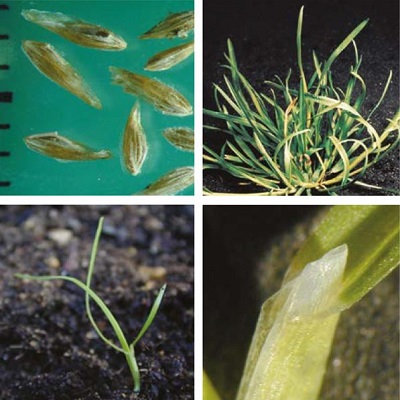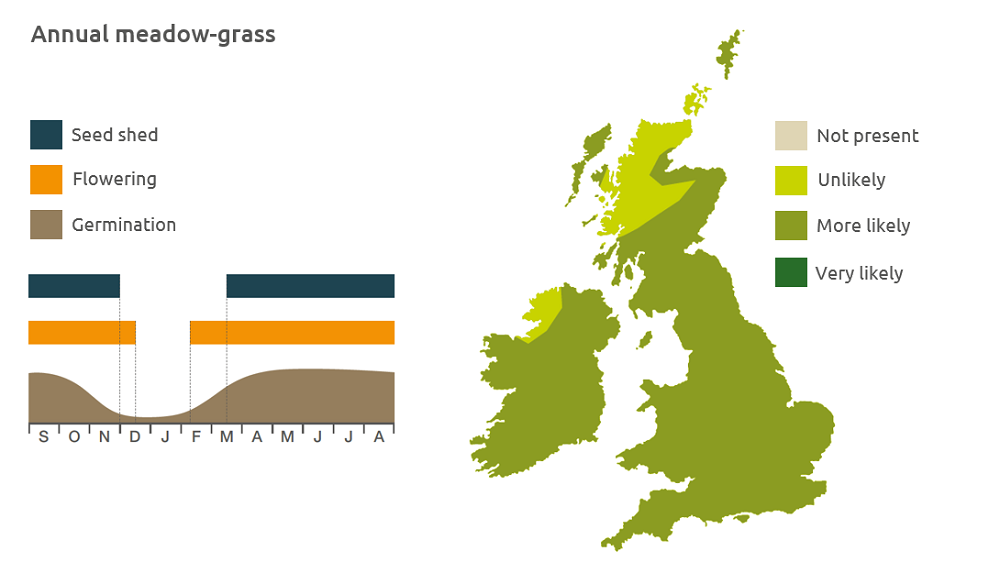- Home
- Knowledge library
- Distribution and biology of annual meadow-grass in the UK
Distribution and biology of annual meadow-grass in the UK
Annual meadow-grass is the most common grass weed in UK arable crops. Find out how to identify and control it.
Overview
Annual meadow-grass (Poa annua) is the most common grass weed in arable crops throughout most of the UK. As it can overwinter, plants are found at all growth stages during the year. It can complete its life cycle in 6 weeks. Although most reproduction is by seed, annual meadow-grass has long lateral roots and can also regenerate from shoots detached from the main plant by disturbance. Annual meadow-grass poses little threat to crop yield, but can delay ripening and interfere with harvest.
- It is particularly competitive in spring crops
- Some populations are associated with herbicide resistance
Weed Resistance Action Group (WRAG)
Description
It is a tufted annual or short-lived perennial grass, often compact, 3–30 cm tall. Shoots and leaves appear flattened. The flowers form an open pyramid on the shoot.
Key features
Young plant: The leaves are light green and flattened, with a curved tip; the undersides have a distinctive central ridge.
Flowers: It flowers all year round.

Location and life cycle

Geographic distribution
Annual meadow-grass grows nationwide and up to an altitude of 1,200 m.
Soil type
It prefers fertile, heavily disturbed soils.
Seed statistics
- Seed longevity: >5 years
- Seed weight: 0.2 mg
- Seeds/flower: 1
- Seeds/plant: 10–500
Management
It is encouraged by minimum tillage compared to ploughing.
It has developed resistance to some herbicides.
For advice on herbicides, please speak with your agronomist or adviser.
When was this information last updated?
This page is based on content from the encyclopaedia of arable weeds publication. Since it was first released in 2008, the publication has been redesigned several times but not revised. However, it remains a good foundation for general information on the distribution and biology of weeds.

